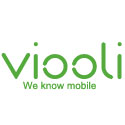If you have any interest in Mobile Analytics and want to know more about one of the leading solutions, check out the interview with Andy Bovingdon, VP Product Marketing at Bango below:
1. Who founded Bango and how long does it exist?
Bango was founded by two internet entrepreneurs - Ray Anderson and Anil Malhotra. Both independently realized that the arrival of the internet on mobile devices would create some important business opportunities and one night, over a beer, discovered that they both had the same idea. Having worked with each other in a previous company, IXI, they decided to launch another business venture together. The company was founded in 1999 so this time next year, Bango will be celebrating its 10th birthday. Back then, mobile phones were rudimentary compared to their modern day equivalents - small black and white screens, no built-in camera, no fast 3G networks, they couldn’t even play polyphonic ringtones.
2, What are the main products, that the Bango team developed?
‘Bango has developed products in 3 areas to overcome problems that businesses, brands and content providers faced as they tried to capitalize on the emergence of the mobile internet. First, how do you make it easy for people to access a web page on the phone when you don’t have a keyboard to enter the URL? Bango developed Bango numbers which take you straight to the web address, Txt and Web Triggers and more recently the “Get on my mobile” Bango Button for PC web pages. More at http://bango.com/tour/traffic/promote.aspx
Second, how do you make money once people are at your mobile site? Bango has pioneered WAP billing, as a replacement for Premium SMS to create a more consumer friendly payment experience where payment is integrated into the mobile web session. You browse a site, click to pay and then download the content or access the service all in one seamless flow. No need to exit a web session to send a text to pay for content and then go back to the web session to pick it up. The mobile operators advocate this approach as they get fewer support headaches from customers who’ve paid but never got their content.
At the backend, Bango integrates with operator’s own billing systems, provides credit/debit card payment where on-phone billing is not possible and also supports PayPal payments. Today, users from over 150 countries using Bango to pay for content and so far 20 million people have paid for content using Bango. More at http://bango.com/products/payment/default.aspx
Thirdly, how do you measure success for your mobile site - initially this was how much money did I earn and what were my conversion rates? Soon our customers were demanding more analytics so over the years more and more metrics were added into the payment prducts - country, network, device etc. At the end of 2007, we realized that more people wanted analytics than payment products so we needed to spin this off into a different product.
3. When did you launch your Mobile Analytics system and how much does it cost
Bango Analytics was launched in February 2008. Prior to this we had launced an analytics solution called Bango Vision in early 2007 but the market was not ready at that stage. This did allow us to get a better understanding for what was important in mobile analytics.
Anyone can start using Bango Analytics for free - this lets you easily analyze your last 100,000 page views or campaign clicks. We then provide upgrades. Our Medium product as the name suggests is designed for medium mobile sites. It costs $49 (€39, £29) and lets you analyze the last 500,000 page views or campaign clicks. Large costs $499 (€399, £299) and lets you analyze the last 5 million page views or campaign clicks. We also provide corporate solutions for the biggest of companies on request.
Paid for packages get added benefit of being able to export data, access to APIs, unlimited tracking of mobile ads or search terms. More at http://bango.com/products/analytics/chooser.aspx
4. What are the key features of Mobile Analytics and how does it distinguish itself from competitors?
Bango uses real data and removes much of the guesswork and estimation traditionally seen with mobile analytics. For example, not only do we identify Mobile Network Operators, we also accurately separate them from Mobile Virtual Network Operators using the same network – Sprint has 27 MVNOs now, each with very different user demographics.
Naturally we deliver all the usual mobile metrics you’d expect, like handset and geo-location by country, but the primary reason companies are choosing Bango for measurement is our ability to accurately count of the number of unique visitors viewing a mobile site or responding to mobile marketing campaigns. Our payment heritage enables us to do this because we need to uniquely identify people as part of the payment process. For each individual that clicks on an ad or browses a site, a privacy protected Bango User ID is created, compiled through sophisticated WAP gateway profiling, data from browser analysis, session information and network interactions. This User ID enables Bango to distinguish between new and repeat users and therefore quantify precisely the number of unique visitors. This unique feature sets us apart from the rest and gives site owners a handle on the true value of their mobile site.
5. What exactly does Bango Mobile Analytics track?
Bango provides two different techniques for capturing mobile metrics – link tracking for campaign analysis and page tracking for site analysis.
Page Tracking identifies and records each unique visitor that navigates your site. All you need to do is add a very simple line of HTML code to each page you wish to track, especially landing pages, home pages and goals, such as download pages and forms. Page tracking records page views using a familiar image tag technology that has been enhanced with Bango unique user identification capabilities.
Campaign Tracking gives you the most accurate record of consumers interacting with your banner ads, search terms and other mobile marketing campaigns. You simply register your landing page and we give you tracking URLs to use in your campaign. Campaign tracking uses URL redirection, the same approach used by many ad-tracking companies. It uses the same visitor fingerprinting algorithm to identify unique visitors and can additionally pass back the user identification, country, operator and handset to your landing page, allowing the site to be personalized for each unique visitor. More at http://blog.bango.com/2008/07/09/tracking-sites-and-campaigns/
Bango also provides promotional tools for people wishing to do text campaigns or drive traffic from their desktop website to their mobile site. We provide the tools to do this and naturally record the results within Bango Analytics.
Finally, since we provide mobile payment products (WAP billing), we also record transactional details within Bango Analytics allowing brands to track initial customer acquisition through site navigation to goals such as payments and downloads – across multiple visits.
6. Is it possible to track campaigns from companies such as Google Mobile Adwords, Admob? If so which other traffic engines / search engines do you you support?
Definitley, Bango Analytics lets you track campaigns on any network - Goole Mobile AdWords, Admob, Decktrade and on from any search engines. Bango Analytics lets you accurately track unique visitors responding to all types of mobile marketing campaigns, providing the precise measurement and insight needed to optimize campaigns and maximize ROI. Because we don’t deliver search or advertising, there’s no conflicts of interest. Many mobile site owners use our tools to get a third party view across their advertising suppliers. We do partner with ad networks who want to offer analytics to their customers as a standard part of their solution and so far have announced Millennial Media and Admoda as partners for this.
7. I saw that you offer an API. What exactly does the API offer to developers and who can use it? Also it would be interesting to hear if you offer a white label solution for mobile web development companies
Bango offers many APIs. For analytics we have a web services reporting API. This provides remote access to all the data being collected, from web pages and marketing campaigns tracked using Bango Analytics. It enables analytics data to be integrated into a web analytics console so you can see PC and mobile data in the same tool. This is great for web analytics providers and consultancies. There’s also an realtime identification API which gives you programmatic access to information on each visitor to your mobile site – ideal for site personalization to further build individual customer engagement. Including:
- A persistent unique User ID to track customers, build profiles and deliver a personalized experience based on their activities during previous visits.
- Geo-location information by county for targetting content and marketing or complying with your media licensing rules.
- Mobile Network Operator identity, including Mobile Virtual Network Operators
All our API docs can be seen at http://bango.com/tour/control/develop.aspx
8. Going back to Mobile Analytics: What’s your experience with your clients so far?
Customers have told us that before they used Bango Analytics they couldn’t….
1. Get an accurate picture of the number of unique visitors they had. They had to guess from the web logs and the results of any mobile marketing they had but this was never very accurate as they couldn’t recognize repeat visitors.
2. Accurately measure the conversion rates from mobile marketing campaigns and see where they were getting the highest returns. Using the analytics data, Tapatap has been able to worked out which country, network and handset delivers the best conversion rates and is now focussing its mobile advertising spend on buying traffic which will generate the highest conversion rate.
More in our case studies at http://bango.com/casestudies/default.aspx
9. When developing Bango Mobile Analytics what where the biggest obstacles?
The biggest challenges often deliver the biggest advantages and with Analytics this is no exception. Getting to the real data on mobile and working around the inconsistencies in browsers, handsets and networks has been a technical challenge. But it has been an important one to conquer to deliver dependable impartial information that our customers can confidently base important decisions on.
10. Where do you think the mobile web is heading to? Will the Mobile Web keep growing or will devices like
the iPhone blurry the differences between the Mobile Web and the “Real Web”?
The mobile web is the real web – there is only one web, it is the devices that provide the difference. Mobile phones traditionally have not had such sophisticated browsers and therefore require sites to recognize the handset and display correctly. The iPhone has most visibly changed this over the last year although many mass market handsets have been gradually increasing their web support and now permit full website browsing, and then there are the other smartphones like Microsoft Windows Mobile. Over time full browsers will become the standard on all handsets and many of todays formatting issues will go away, but mobile devices still have different usability that will require some thought on page formatting.
Browsing the web from mobile phones will continue to grow dramatically, especially with awareness of browsing from Apple, Nokia and Microsoft. Mainstream manufacturers are already supplying full browsing capabilities – Nokia is a great example. The increase in the browsing capabilities of mass market phones will make it easier for companies to deliver greater capabilities.
11. Last question: What are Bango‘s plans for the future?
Bango’s plans for the future remain the same as when the company formed 9 years ago. Our mission is still to make it easy for brands and content owners to deliver the best mobile experience worldwide. The mobile phone is personal, always on and always with you as you travel making it conceptually possible to deliver a much more sophisticated, personalized and contextually aware experience. This means consumers get the stuff they are interested in and the brands and companies reach customers with greater ease. With important mobile basics like payment and analytics in place we can start to increase the value mobile brings to the market.
Thanks for the Interview.






